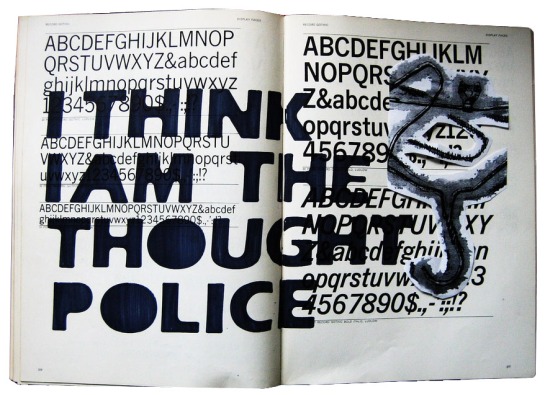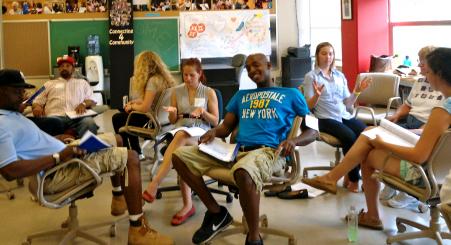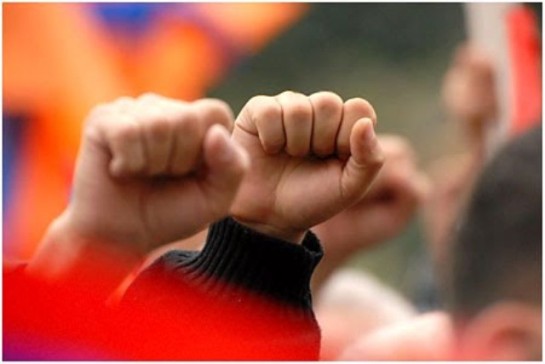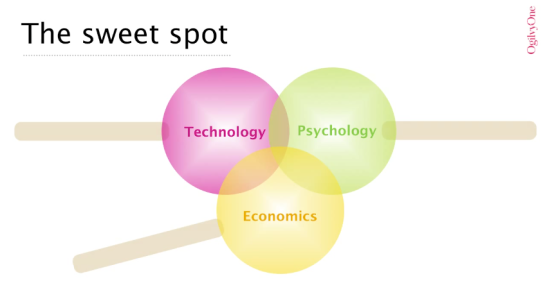Approaching Change
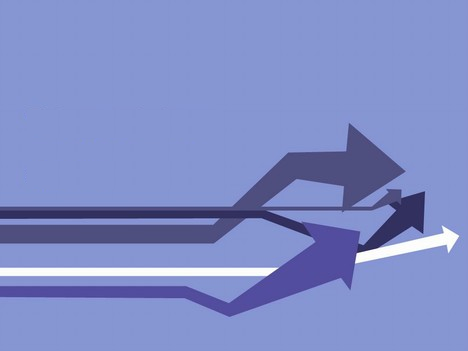
It can seem like there are almost as many options for approaching major organisational change (a.k.a. trans-mindset Rightshifting) as there are organisations looking to change.
Indeed, when introducing Rightshifting to people, the second question they most often ask, once having grasped the basic idea, is: “How do we go about rightshifting, then?”. And in particular: “How might we go about effecting a ‘transition’?”.
I’ve listed hereunder some twenty three options presently known to me, either from personal experience, or from relevant case studies documented in the literature.
Deciding on Approach
The most interesting question for me, however, is not which option is best, nor even which option may be best in a given context or situation, but how best to decide which option to focus on, in any given instance. This seems a specific case of the more general issue of Focus, about which I wrote a post some months ago.
In other words, how we choose to go about making our selection (of approach) is at least as important as the approach eventually selected.
Are the options listed here mutually exclusive? Not at all. I can envisage some of them complementing each other nicely. But that does not detract from the aforementioned need for focus, and the benefits of a clear focus on just one (main) approach.
And even before spending time on deciding which approach might suit best, I’d want to understand the purpose of the proposed change effort (along with the purpose of the organisation in question). Something along the lines of OODA.
Agency and Engagement
Aside: I believe organisational change has more chance to go well, and has more chance for sustainability, when folks across the whole organisation have the opportunity to get involved and contribute. This applies as much to the choice of approach as it does to the day-to-day work of change within the chosen approach. See: Sense of Agency.
And let’s not overlook the fact that, for transitions in particular, we’re talking about change involving the wholesale replacement of one memeplex for another – involving the organisation-wide adoption of a host of new and counter-intuitive “truths”.
“It’s hard to teach counter-intuitive truths by explanation.”
~ Taiichi Ohno
And once we have decided on a specific approach, it might be well to consider how to continue to involve as many folks as possible. A recent blog post “The CI Vaccine” talks about involving folks in a Continuous Improvement programme – I’d suggest the same issues apply in the context of more general organisational change, too.
Option 1 – Productive Dialogue first
This option places the development of an organisation-wide capability for productive dialogue at the tip of the spear. This may often require education, training and practice in basic dialogue skills.
Once a basic facility for productive dialogue has emerged, the organisation can then begin to explore what’s important, including perhaps these two questions:
Q1: “What is the purpose of this work, from the paying customers’ (end-users’) point of view?
Q2: “What measures will the workers choose and use to understand and improve their work?”
Option 2 – Get knowledge (with a view to changing the System)
This option presumes that knowledge of what’s really happening in the organisation is crucial to instituting effective change. To get knowledge the change agents might choose to:
- Go to the Gemba, accompanied by the managers
- Study the system (the way the work works)
- Understand the work
- Follow the path of PURPOSE – MEASURES – METHOD
Some more astute readers might recognise this option as, essentially “the Vanguard (UK) approach”.
Option 3 – Kanban
The Kanban option suggests we apply the principles of the Kanban method to organisational change:
- Make things visible
(NB Consider the side-effects of this new transparency, especially re: salaries, etc.). - Limit WIP
- Manage flow
- Make policies visible
- Improve collaboratively
Option 4 – Positive Psychology / Solutions Focus
This option places the principles of Positive Psychology at the tip of the spear:
- Asking “What’s going well?”
- Deciding “What should we do more of?”
- Posing “The Miracle Question” c.f. Solutions Focus
- Adopting the position that “People already have all the resources they need to achieve their goals”
- Following the precepts of e.g. P.E.R.M.A.
”If you want well-being, you will not get it if you care only about accomplishment [e.g. profit]. If we want to flourish, we must learn that the positive business and the individuals therein must cultivate meaning, engagement, positive emotion, and positive relations – as well as tending to profit.”
~ Martin Seligman
Option 5 – Coaching and Conversations
This option takes its cue from e.g. Sir John Whitmore’s “Coaching For Performance” (and, by implication, The Inner Game). This is centered around the acronym G.R.O.W:
- Goals (What are we trying to achieve?)
- Reality (Where are we now with respect to our goals?)
- Options (What options do we have?)
- Will (What will we commit to doing?)
Option 6 – Selling the Dream
This option pursues Guy Kawasaki’s advice as detailed in his book “Selling The Dream”. We might sum this up through the following quotation:
“If you want to build a ship, don’t drum up people together to collect wood and don’t assign them tasks and work, but rather teach them to long for the endless immensity of the sea.”
~ Antoine de Saint-Exupery
In the context of organisational change, then, this option suggests engaging folks emotionally in a common “cause”. I’d further suggest that things might go even better should the folks involved get to decide what their common cause might be. (Sense of Agency, again).
Option 7 – Capture the Flag
This is the “JFDI” option. Exercise authority (or build consensus), declare an objective (“take Hill 927”) and just get started on making some changes, and see where that leads. When it looks like it might be time to consider a transition, just make that happen, too. In a nutshell, then, this option argues for action over deliberation, and accepts the role of failure and evolution in learning and moving towards a new (and fuzzy, at the outset) “future state”.
Option 8 – Timeline driven (Context-driven)
This option represents the more traditional – in some ways – PDCA approach. I.E. Understand the current state (A), map a future state (B), and plan a path from A to B (whether iteratively or not being a moot point). In other words:
- Identify the prevailing mindset
- Decide (through leadership or consensus) on the desired rate of rightshift
- Schedule transitions
- Work from that timeline
Option 9 – Emotioneering
This option posits that engaging people (i.e. the workforce) emotionally offers a good chance for effective, sustainable change. If we see the workforce as “the customer” in this context, then this Steve Jobs quote seems apposite:
“You’ve got to start with the customer experience and work back toward the technology – not the other way around.”
~ Steve Jobs
And indeed, we could image an option 9a, where the (end) customer experience is the thing we identify first and foremost, and all other decisions and changes flow from the desire to effect (and then improve) that customer experience.
Option 10 – The Last Mile First aka Servant Leadership
This option encourages (even requires) the workers to come up with their own solutions, using the middle management, specialists, functions etc. as their resources, to “pull” support as needed.
For an example, see: In a Change Effort, Start with the Last Mile ~ Ron Ashkenas in HBR
Option 11 – Consensus
This option begins by exploring the possibility of building a consensus about what matters, and how to proceed:
- Is purpose important?
- What about consensus?
- And Dialogue?
- Which of the principles mentioned herein (see: at end) do we think count?
- And in what order (of e.g. significance, impact), if any?
We might choose to use something life World Cafe or Open Spaces to help approach the building of such a consensus.
Option 12 – Reference Projection / Interactive Planning (Ackoff)
See: Interactive Planning
“The best place to begin an intellectual journey is at its end.”
~ Russell Ackoff
Option 13 – Theory of Constraints
This option, perhaps the most developed, documented and widely-practived of all the options listed here, follows the path laid down by Goldratt in his Theory of Constraints work. In essence, this approach is predicated on the three focussing questions:
- What to change?
- What to change to?
- How to effect the change?
Theory of Constraints has a well-developed toolkit to help address each of these questions.
Option 14 – Scenario Modelling (Kahane)
See: “Solving Tough Problems” ~ Kahane, and Scenario Analysis.
Option 15 – Identify Needs, Quantify Objectives, Prioritise by Impact
This option is based on the approach of Tom Gilb as described e.g. in his books “Principles of Software Engineering Management” and “Competitive Engineering“. At its core is the idea of getting everyone on the same page with respect to what we’re trying to accomplish, through the use of quantification (expressing objectives in numerical or quasi-numerical terms).
Once most folks are on the same page with respect to the objectives, impact mapping can rank the sequence of necessary actions to achieve said objectives.
Option 16 – Kotter
This option uses John Kotter’s Eight Step change model, which he introduced in his 1995 book, “Leading Change”:
- Step 1: Create Urgency
- Step 2: Form a Powerful Coalition
- Step 3: Create a Vision for Change
- Step 4: Communicate the Vision
- Step 5: Remove Obstacles
- Step 6: Create Short-term Wins
- Step 7: Build on the Change
- Step 8: Anchor the Changes in Corporate Culture
Option 17 – Tribes
This option leverages folks innate tribal tendencies to turn them away from internecine strife and towards bonding together to compete with external competitors. This is explained in detail e.g Ray Immelman’s book “Great Boss, Dead Boss”.
Option 18 – Skunkworks
This option concedes that changing any non-trivial organisation in-situ may prove more disruptive, and more disconcerting to the status quo, than the organisation is prepared (sic) to tolerate or accept. Under this option, significant changes are limited to a small section of the organisation (either an existing or a new unit). This selected unit is kept at arms length from the core organisation, so that changes in the given unit (the skunkworks) do not affect (“contaminate”, disrupt) the status quo of the main organisation.
Option 19 – Pouring aka Phoenix
This option, like option 18, concedes that an in-situ change may prove more disruptive and more disconcerting to the status quo than the organisation is prepared to tolerate or accept. However, certain parties may be keen to see the existing organisation and its status quo die out over time, to be replace with a new organisation fulfilling all the function of the old, albeit in dramatically different ways. To this end, this option posits the creation of a new, empty “vessel” into which selected (suitable) elements of the old organisation are selectively “poured. This transfer of people, plant, market segments, etc, continues, at a pace dictated e.g. by events, until the rump of the old organisation can be disposed-of.
Option 20 – Organisational Health
This option places the health of the organisation at the tip of the spear. Patrick Lencioni in his most recent book “The Advantage” suggests that:
“The single greatest advantage any company can achieve is organizational health. Yet it is ignored by most leaders even though it is simple, free, and available to anyone who wants it.”
~ Patrick Lencioni, The Advantage
In his several other books, Lencioni has argued for placing trust and the development of (vulnerability-based) trust at the heart of any approach to change. Cf. The Lencioni pyramid from “Five Dysfunctions of a Team”.
Option 21 – The Enlightened Organisation
An option related to option 20, but focussed on enlightenment rather than mental health per se. You can read more about this in a post of mine titled “Zen and the Art of Organisational Enlightenment”.
Option 22 – Frame and Reframe
This option draws on experience and practice in both cognitive therapy (where it’s often called Cognitive Restructuring) and life more generally. This approach makes the phenomenon of frames and framing visible and explicit, and then builds on this new knowledge to identify the current frame(s) in which the organisation is operating/thinking. Then potential new frames are discussed, with the existing situation recast in those new frames (reframed).
Option 23 – Nonviolence
“Make things more wonderful for everyone, mutually.”
This option applies the principles of Nonviolent Communication, as laid out by Marshall Rosenberg in his book of the same name:
- Empathy
- Observations
- Feelings
- Needs
- Requests
Practically, in this approach we ask people how they feel (about their role in the organisation, the present, the future), and what they need from the organisation. From their needs we build (and evolve) a coherent collection of specific, positive, actionable requests, which together constitute a practicable, actionable agenda for our approach to change.
These agenda items can play the role of stories in e.g. a change backlog and maybe we can use e.g. Kanban to work through them systematically.
In this way we progressively evolve an organisation which meets the needs of all its stakeholders (cf Covalence).
Note: We might regard this option as a particular instance of a Therapy-based approach – and in particular a Client-centered Therapy approach.
Note: I’ve written more about this particular option in a more recent post.
Some Principles
Most if not all of the above options have some core principles in common:
How to Choose
Ah, well. That is the 64,000 dollar question.
I’m not going to pretend that I have a general, universal approach to the question of how to go about choosing one of the above options, in any given situation. You’ll probably not be surprised when I say “It depends (on context)”.
But I would say that choosing is as much of a challenge as, subsequently, effecting that so-chosen option.
Personally, I prefer to build a consensus, involving as many folks as possible in the choosing process. That way, by the time a particular option is selected, and the change journey itself begins, folks have already bought into the option – and the need for change. And embraced the chosen option as – at least, partially – their own. In fact, any one, or combination of, the above options are as relevant in the choosing as in the subsequent change journey itself.
What if things go less-than-well? What if the option we chose turns out to be not such a good choice after all? What if, in the light of experience, we find we might like to change horses mid-stream? I see this as feasible, and even probable. And made much less of a challenge if folks generally have had a meaningful part to play in the initial choice – and in the subsequent questions of “should we now change?” and “what to change to?”, too. You may even see – as I do – some parallels with the Lean Startup ideas, and in particular the idea of “pivots”.
Loose Ends
One thorny question is: What to do about new hires, folks who join the organisation after the initial consensus-buliding, dialogues, or whatever, has happened?
Another concerns the unintended consequences that naturally and almost inevitably follow when we try to intervene in complex, non-linear systems.
“Be careful of what you wish for.”
– Bob

